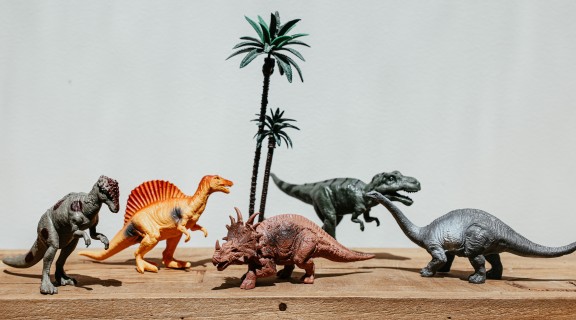
Small worlds are a big deal
28 October 2021 | State Library of Queensland
Have you ever heard the saying, ‘play is the work of children’? Well, it really is. Play is how children build language skills and learn to make sense of the world.
So, what is small world play? Well, it’s simply that - creating a mini version of a life scene, like a farm or pond, using found objects and small items.
When children engage in small worlds, they role play and talk out loud which boosts their vocabulary. They’re using their imagination to recreate their own version of the world as they know it, where they make up the rules and control what happens in it.
You can help your child create a small world using everyday household items. It’s a good idea to choose a scene your child is familiar with so they can build on what they already know. Zoos and farms are perfect as most children love animals and know of some already through family pets or trips.
You can transform a simple cardboard box into anything - a barn for farm animals, a mini fire station, a school or house. And you can use blocks, paddle pop sticks, pegs, wool, cotton balls, egg cartons, stones, pines, sand, or cardboard rolls to help create the scene together. The creative possibilities are limitless!
Small world play also benefits you as you meet your child at their level and engage in a fun and meaningful way with them. It’s a wonderful opportunity to see the world through their eyes. Listen as your child plays, so you can focus on what’s interesting them the most, and join into the conversation, adding in new words that relate to what you’re both doing.
Small world play comes naturally to children. They instinctively create scenes and stories, whether it’s with their toys or with sticks, dirt and stones outside in the garden. All you need to do is give them the time and space for small world play to flourish.
Comments
Your email address will not be published.
We welcome relevant, respectful comments.